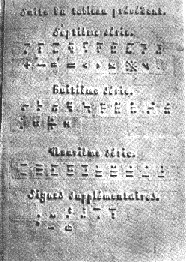A line must not be skipped above or below a displayed expression unless the expression precedes or follows a heading, or unless a blank line is required under other provisions of the code.
When a displayed expression occurs in unitemized explanatory portions of the text, it must begin in cell 3, and its runovers must begin in cell 5.
(1) The expression a(b + c) -d(b + c) has the
form ax - dx where x = b + c. Thus
ax - dx = x(a - d)
and therefore
a(b + c) - d(b + c) = (b + c)(a - d).

(2) A sequence a1, a2, a3, ..., an is said to
converge if, for each h > 0, there exists
a positive number M such that
| an-A | < h, for all n > M.
A sequence that does not converge is said
to diverge.
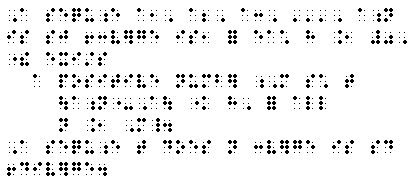
(3) We use the number line to show
-6 < -5, 0 < +6, -8 < +2, -1 > -5, +1 > -1.
Is every positive integer greater than 0? Is
every negative integer less than 0?

(4) The equation states that the
product of 24 and some number 24 x N = 264
is 264. How can you find the
missing numeral?

When a displayed expression occurs within itemized text and the item containing it is a main division with no substitutions, the displayed expression must begin in cell 5, and its runovers must begin in cell 7.
(1) If A, B, C, C' are constants, show that
Ax + By + C = 0
Ax + By + C' = 0
are parallel and the lines
Ax + By + C = 0
Ax + By + C' = 0
are perpendicular.
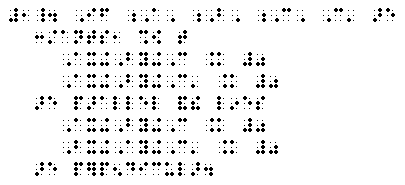
(2) To find the product of 2 x 5.4
First: multiply the tenths, 2 x .4 = .8,
Second: multiply the ones, 2 x 5 =10.
Then add: 10 + .8 = 10.8.
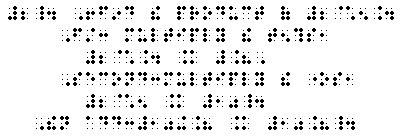
(3). Use the number line to show
-1 < +1, -5 < -1, +12 > -8, +6 > +4.
If every negative integer is less than 0,
what is every positive integer?

When a displayed expression occurs within itemized text and the item containing it is a main division with subdivisions, the displayed expression, regardless of whether it applies to the main division or a subdivision, must begin in cell 7, and its runovers must begin in cell 9.
(1) Write each positive integer as a polynomial in 10.
- Compare
x3 + 9x2 + 7x + 1 and
103 + 9(10)2 + 7(10) + 1, that is 1971.
- The number 185,000,000,000 can be written as
185 x 109, or as 1.85 x 1011.
Use the principles in a and b to write
x4 + 7x3 + 5x2 + 3x + 1 and 125,000,000,000.
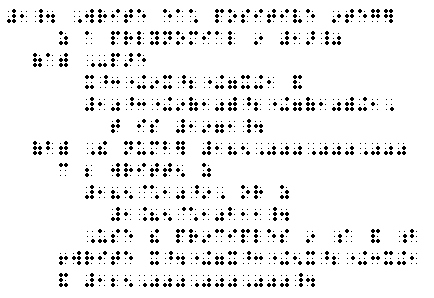
When a number or letter is used to identify a displayed expression, it must begin in the appropriate cell for displayed material in accordance with the rules of a-d above. If such numbers or letters occur to the right of the expression in print, they must be placed at the left of the expression in braille, and a transcriber's note concerning the change in position must be incorporated at the beginning of the first volume.
A page reference to a displayed expression must immediately follow that expression.
(1) Two basic laws of arithmetic are the
commutative law for addition
a + b = b + a, (1)
and the commutative law for multiplication
a x b = b x a. (2).

(2) Use the formula
an = a1 + (n-1)d (12.3)
to find an and n when a1 = 1, d = 7, sn = 204.

(3) Give two examples illustrating
(a) The associative law for addition
(a + b) + c = a + (b + c). (4)
(b) The associative law for multiplication
(a x b) x c = a x (b x c). (5).

(4) The rules for subtraction depend upon those for addition
a - b = a + (-b). (115-116)

(5) The distributive law can be stated in the form
a x (b + c) = ab + ac. (127-130).

